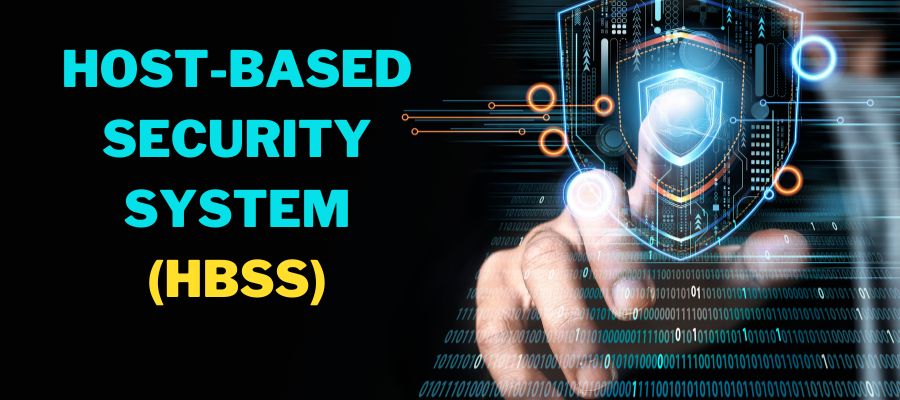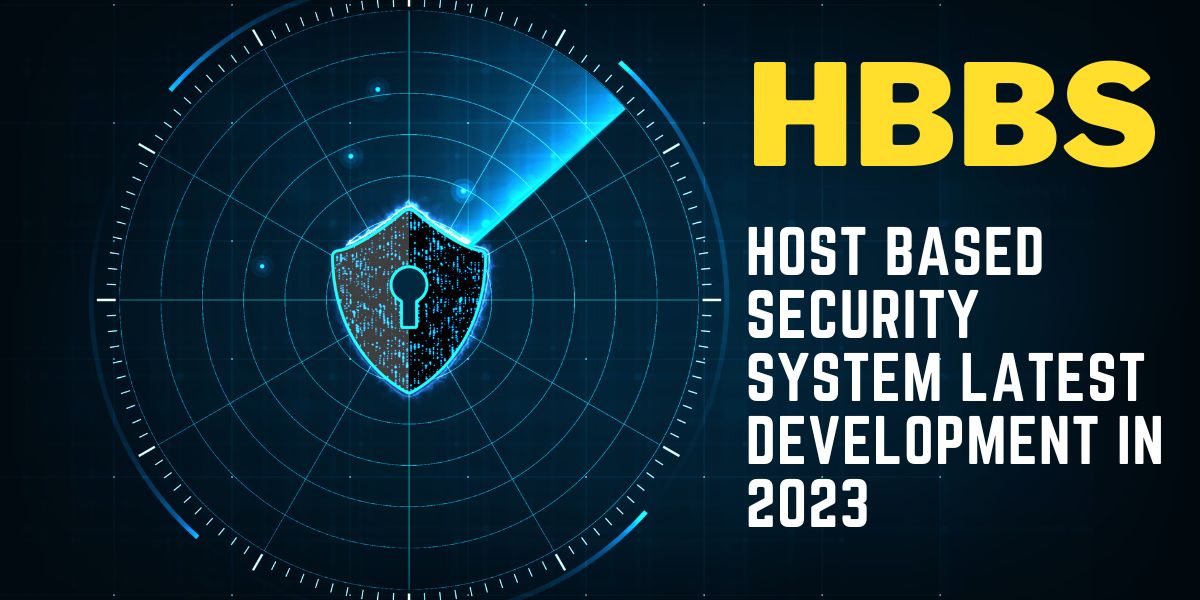Host-Based Security System (HBSS) is a commercial, off-the-shelf (COTS) endpoint security software that the Department of Defense uses to monitor, detect, and defend IT assets and systems . Recently, the Defense Information Systems Agency (DISA) has rebranded HBSS into a new suite called Endpoint Security Solutions (ESS), which adds new capabilities on top of the existing HBSS software . ESS is a multi-point product designed to meet known intrusion points, discover gaps, and reduce the likelihood of unauthorized device and network access .

The latest development in this sector is the release of HIPS 8.0 Migration Tool Supplemental Training Aide by DISA HBS Program Management office in support of USCYBERCOM TASKORD 12-0789 “Upgrading to Host Based Security System (HBSS) ePO 4.5 MR 4” .
Features of Host Based Security System (HBSS)
Host-Based Security System (HBSS) is a commercial, off-the-shelf (COTS) endpoint security software that the Department of Defense uses to monitor, detect, and defend IT assets and systems . It provides host-level protection for several threat vectors that typically target desktop operating systems . HBSS is based on McAfee, Inc’s ePolicy Orchestrator (ePO) and other McAfee point product security applications such as Host Intrusion Prevention System (HIPS) . The system comprises several modules, including:
- Host Intrusion Prevention System (HIPS): A module that provides intrusion detection and prevention capabilities to protect against known and unknown threats .
- Policy Auditor (PA): A module that enables administrators to audit and enforce compliance with security policies across the enterprise .
- Assets Baseline Module (ABM): A module that enables administrators to establish a baseline of authorized software and configuration settings for each host ¹.
- Rogue System Detection (RSD): A module that detects unauthorized devices on the network and prevents them from accessing sensitive data .
- Device Control Module (DCM): A module that enables administrators to control access to peripheral devices such as USB drives, CD/DVD drives, and printers .
- Asset Publishing Service (APS): A module that enables administrators to publish asset information to other HBSS servers in the enterprise .
Recently, the Defense Information Systems Agency (DISA) has rebranded Host-Based Security System (HBSS) into a new suite called Endpoint Security Solutions (ESS), which adds new capabilities on top of the existing HBSS software . ESS is a multi-point product designed to meet known intrusion points, discover gaps, and reduce the likelihood of unauthorized device and network access .
Difference between HIPS and PA modules in HBSS
Host Intrusion Prevention System (HIPS) and Policy Auditor (PA) are two of the several modules that comprise the Host-Based Security System (HBSS) .

HIPS is a module that provides intrusion detection and prevention capabilities to protect against known and unknown threats . It is designed to monitor system activity and detect suspicious behavior, such as unauthorized access attempts, malware infections, and other security breaches . HIPS can also block or quarantine malicious activity in real-time, preventing it from causing further damage to the system .
PA, on the other hand, is a module that enables administrators to audit and enforce compliance with security policies across the enterprise . It provides a centralized view of the security posture of all endpoints in the network, allowing administrators to identify vulnerabilities and take corrective action as needed . PA can also generate reports that demonstrate compliance with regulatory requirements such as HIPAA, PCI-DSS, and SOX .
How does HBSS protect against threats?
Host-Based Security System (HBSS) is a commercial, off-the-shelf (COTS) endpoint security software that the Department of Defense uses to monitor, detect, and defend IT assets and systems . It provides host-level protection for several threat vectors that typically target desktop operating systems . HBSS is based on McAfee, Inc’s ePolicy Orchestrator (ePO) and other McAfee point product security applications such as Host Intrusion Prevention System (HIPS) ¹. The system comprises several modules, including:
- Host Intrusion Prevention System (HIPS): A module that provides intrusion detection and prevention capabilities to protect against known and unknown threats .
- Policy Auditor (PA): A module that enables administrators to audit and enforce compliance with security policies across the enterprise .
- Assets Baseline Module (ABM): A module that enables administrators to establish a baseline of authorized software and configuration settings for each host .
- Rogue System Detection (RSD): A module that detects unauthorized devices on the network and prevents them from accessing sensitive data .
- Device Control Module (DCM): A module that enables administrators to control access to peripheral devices such as USB drives, CD/DVD drives, and printers .
- Asset Publishing Service (APS): A module that enables administrators to publish asset information to other HBSS servers in the enterprise .
Read This Also: Stay Anonymous and Protected: The Best Free VPN for PC in 2023
HBSS protects against threats by providing a multi-layered defense mechanism that includes both signature-based and behavior-based detection techniques . The HIPS module uses signature-based detection to identify known threats such as viruses, malware, and spyware .
It also uses behavior-based detection to identify unknown threats by monitoring system activity for suspicious behavior patterns . The PA module ensures compliance with security policies by auditing endpoints for vulnerabilities and enforcing corrective action as needed .
The ABM module helps prevent unauthorized changes to system configurations by establishing a baseline of authorized software and configuration settings for each host . The RSD module detects unauthorized devices on the network and prevents them from accessing sensitive data .
The DCM module controls access to peripheral devices such as USB drives, CD/DVD drives, and printers, thereby reducing the risk of data loss or theft . Finally, the APS module enables administrators to publish asset information to other HBSS servers in the enterprise, ensuring that all endpoints are protected against known threats .
FAQ
10 FAQ and relevant answers on host-based security systems
1. What is a host-based security system?
A host-based security system is a set of security controls that are implemented on individual computer systems, such as servers, workstations, and laptops. Host-based security systems protect these systems from unauthorized access, use, disclosure, disruption, modification, or destruction.
2. What are the benefits of using a host-based security system?
Host-based security systems offer a number of benefits, including:
- Protection against a wide range of threats: Host-based security systems can protect against a wide range of threats, including viruses, malware, spyware, ransomware, and denial-of-service attacks.
- Defense in depth: Host-based security systems provide an additional layer of security beyond network-based security systems. This helps to protect systems even if a network-based security system is compromised.
- Flexibility: Host-based security systems can be tailored to the specific needs of each system. This makes them a good choice for both small and large organizations.
3. What are the different types of host-based security systems?
There are a variety of different types of host-based security systems, including:
- Antivirus software: Antivirus software detects and removes viruses and other malicious software.
- Firewall software: Firewall software blocks unauthorized access to a system.
- Intrusion detection and prevention systems (IDS/IPS): IDS/IPS systems detect and prevent malicious activity on a system.
- Application control software: Application control software restricts the types of applications that can be executed on a system.
- Data loss prevention (DLP) software: DLP software prevents sensitive data from being leaked or stolen.
4. What are the best practices for implementing a host-based security system?
When implementing a host-based security system, it is important to follow best practices, such as:
- Use a variety of security controls: No single security control is perfect. Therefore, it is important to use a variety of security controls to protect your systems.
- Keep your security controls up to date: Security threats are constantly evolving, so it is important to keep your security controls up to date.
- Monitor your systems: It is important to monitor your systems for suspicious activity. This will help you to detect and respond to attacks quickly.
5. How can I choose the right host-based security system for my needs?
When choosing a host-based security system, it is important to consider the following factors:
- The type of systems you need to protect: Consider the types of systems you need to protect, such as servers, workstations, and laptops.
- The threats you need to protect against: Consider the types of threats you need to protect against, such as viruses, malware, spyware, ransomware, and denial-of-service attacks.
- Your budget: Host-based security systems can range in price from free to thousands of dollars. Choose a system that fits your budget.
6. What are the common challenges of implementing and managing a host-based security system?
Some of the common challenges of implementing and managing a host-based security system include:
- Keeping security controls up to date: It can be difficult to keep all of your security controls up to date, especially if you have a large number of systems.
- Managing security policies: It can be difficult to manage security policies across a large number of systems.
- Detecting and responding to attacks: It can be difficult to detect and respond to attacks quickly, especially if you have a large number of systems.
7. How can I overcome the challenges of implementing and managing a host-based security system?
To overcome the challenges of implementing and managing a host-based security system, you can consider the following:
- Use a centralized management system: A centralized management system can help you to keep your security controls up to date and manage security policies across a large number of systems.
- Use a security information and event management (SIEM) system: A SIEM system can help you to detect and respond to attacks quickly by collecting and analyzing security logs from a variety of sources.
- Outsource your host-based security management: If you do not have the resources to manage your host-based security system in-house, you can consider outsourcing it to a managed security service provider (MSSP).
8. What are the emerging trends in host-based security?
Some of the emerging trends in host-based security include:
- Use of artificial intelligence (AI) and machine learning (ML): AI and ML are being used to develop new and more effective ways to detect and prevent attacks. For example, AI-powered security solutions can be used to detect anomalous behavior on systems, which may indicate an attack.
- Use of cloud-based security solutions: Cloud-based security solutions can provide a number of benefits, such as scalability, ease of management, and lower costs. For example, cloud-based antivirus solutions can protect systems from malware without the need to install and maintain antivirus software on each system.
- Use of security orchestration, automation, and response (SOAR) solutions: SOAR solutions can help organizations to automate the security response process. This can help organizations to detect and respond to attacks more quickly and effectively.
9. How can I stay up-to-date on the latest host-based security threats and trends?
There are a number of ways to stay up-to-date on the latest host-based security threats and trends, including:
- Read security blogs and websites: There are a number of security blogs and websites that provide information on the latest threats and trends.
- Attend security conferences: Security conferences are a great way to learn about the latest threats and trends from security experts.
- Subscribe to security advisories: Security vendors and government agencies often issue security advisories to warn organizations of new threats.
- Use a security information and event management (SIEM) system: A SIEM system can help you to detect and respond to attacks quickly by collecting and analyzing security logs from a variety of sources.
10. What are the top three things I should do to improve my host-based security?
The top three things you should do to improve your host-based security are:
- Install and keep up to date antivirus software. Antivirus software is essential for protecting your systems from viruses and other malware.
- Apply security patches promptly. Security patches are released by vendors to fix security vulnerabilities in their software. It is important to apply security patches promptly to prevent attackers from exploiting these vulnerabilities.
- Use strong passwords and enable multi-factor authentication. Strong passwords and multi-factor authentication make it more difficult for attackers to gain unauthorized access to your systems.
By following these tips, you can improve your host-based security and protect your systems from a wide range of threats.

